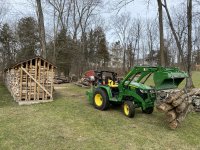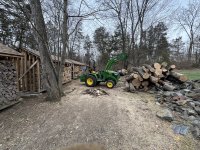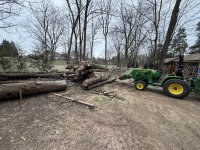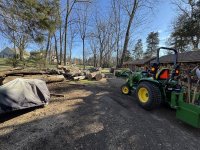BnRidge
Gold Member
Wood contains free water (within cells) and bound water (within the cell walls). It only takes a few weeks or months for free water to escape, but months to years for bound water to escape. Wood will rapidly dry to around 30%, then very slowly dry to the equilibrium moisture content.A wood drying question. In my mind you have two kinds of moisture, from when the tree was a living organism and when it gets external moisture, like rain. If you season wood for a year or two that gets the moisture out of it from when it was alive.
When the wood gets rained on, does that mostly stay on the outside and dry off quickly or get inside the wood and take weeks to dry out?
Rain soaking adds to the cells in a short time, and also can evaporate off in a short time. It could slow or reverse the drying of the bound water.
Some woods have closed cells, like white oak, and will not allow water to pass (water tight barrels, ship timbers). Others, like red oak, are open cell, which you could blow through like a straw, and will wet up and pass water far easier.

Last edited:




